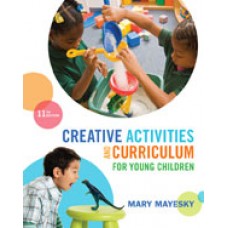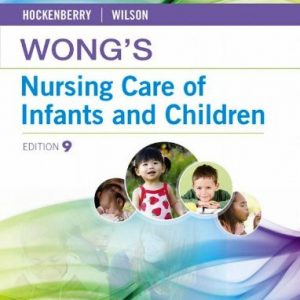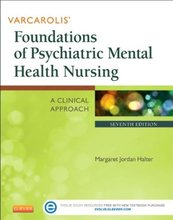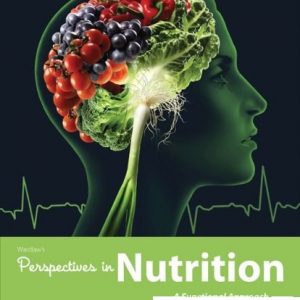This is completed downloadable of Test Bank for Creative Activities and Curriculum for Young Children, 11th Edition
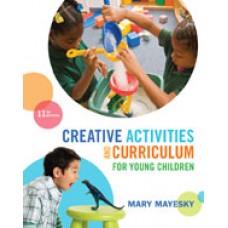
Product Details:
- ISBN-10 : 1305496779
- ISBN-13 : 978-1305496774
- Author: Mary Mayesky
CREATIVE ACTIVITIES AND CURRICULUM FOR YOUNG CHILDREN, 11th Edition, is filled with fun, creative, and easy-to implement activities for young children. You’ll be encouraged to exercise your own creativity as well as learn how to help young children do the same. Hundreds of activities, up-to-date research, recipes, finger plays, information on how to select children’s books, and more make this book an invaluable resource for you and others planning to work creatively with children across the curriculum. This is a book you’ll want to use throughout your professional career.
Table of Content:
- Part 1: Fostering Creativity and Aesthetics in Young Children: Theoretical Basis
- Ch 1: The Concept of Creativity
- Introduction
- Learning Objectives
- 1-1: What Is Creativity?
- 1-2: Importance of Creativity: Benefits for Teachers and Children
- 1-3: Creativity throughout History
- 1-4: Characteristics of Creative Children
- 1-5: Helping Children Express Creativity
- Summary
- Key Terms
- Learning Activities
- References
- Ch 2: Promoting Creativity
- Introduction
- Learning Objectives
- 2-1: The Relationship between Creativity and the Curriculum
- 2-2: Promoting Creativity through Play and Exploration
- 2-3: Modifying Curriculum to Encourage Creativity
- 2-4: Differentiated Instruction and Creative Early Childhood Curriculum
- 2-5: Creative Questioning Strategies to Encourage Creative Thinking
- Summary
- Key Terms
- Learning Activities
- Activities for Children
- Activities for Older Children (Grades 4–5)
- References
- Ch 3: The Concept of Aesthetics
- Introduction
- Learning Objectives
- 3-1: Aesthetics
- 3-2: Developing Children’s Aesthetic Sensitivity
- 3-3: Benefits of Aesthetic Sensitivity
- 3-4: Language for Talking about Art: Art Elements
- Summary
- Key Terms
- Learning Activities
- Activities for Children
- Activities for Older Children (Grades 4–5)
- References
- Ch 4: Promoting Aesthetic Experiences
- Introduction
- Learning Objectives
- 4-1: Looking and Seeing
- 4-2: Sensing, Feeling, and Imagining
- 4-3: Choosing and Organizing Aesthetic Materials
- 4-4: Guidelines for Using Aesthetic Materials
- 4-5: Talking with Children about Their Art
- Summary
- Key Terms
- Learning Activities
- Activities for Children
- Activities for Older Children (Grades 4–5)
- References
- Part 2: Planning and Implementing Creative Activities: Developmentally Appropriate Practice
- Ch 5: Children, Teachers, and Creative Activities
- Introduction
- Learning Objectives
- 5-1: Consider the Child’s Developmental Level
- 5-2: Developmentally Appropriate Practice
- 5-3: Differentiated Instruction
- 5-4: Differentiated Instruction and Multiple Intelligences
- 5-5: Bloom’s Taxonomy
- 5-6: Differentiated Instruction and Children with Special Needs
- 5-7: Attention Span, Activity Patterns, and Children’s Physical Needs
- 5-8: Consider the Teacher/Caregiver: Attitude
- 5-9: Strategies for Success: General Planning Guidelines
- 5-10: Strategies for Success—The National Level
- Summary
- Key Terms
- Learning Activities
- References
- Ch 6: Creative Environments
- Introduction
- Learning Objectives
- 6-1: General Guidelines for Appropriate Physical Environments
- 6-2: Safety Factors
- 6-3: Main Considerations in the Arrangement of Space and Equipment
- 6-4: Activity/Interest Centers that Encourage Children’s Creativity
- 6-5: Decisions Involved in Setting up Activity Centers
- 6-6: Selecting Equipment for Creative Activities
- 6-7: Interest Centers and Multicultural Learning
- Summary
- Key Terms
- Learning Activities
- References
- Ch 7: Play, Development, and Creativity
- Introduction
- Learning Objectives
- 7-1: The Concept of Play
- 7-2: Play: Theories of Parten, Smilansky, Piaget, and Vgotsky
- 7-3: Importance of Play to Human Growth and Development
- 7-4: Developmentally Appropriate Childhood Games
- 7-5: Adapting Environments to Encourage Social Development for Children with Special Needs
- 7-6: Violent Play
- Summary
- Key Terms
- Learning Activities
- Activities for Children
- Activities for Older Children (Grades 4–5)
- References
- Ch 8: Using Technology to Promote Creativity
- Introduction
- Learning Objectives
- 8-1: NAEYC Technology Position Statement and Developmentally Appropriate Practice
- 8-2: Deciding to Use Technology: Pros and Cons
- 8-3: Technology that Develops Creativity
- 8-4: Value of Computers in Early Childhood Programs
- 8-5: Choosing Developmentally Appropriate Software for Young Children
- 8-6: Basic Types of Children’s Websites
- Summary
- Key Terms
- Learning Activities
- Activities for Children
- References
- Part 3: Art and the Development of the Young Child
- Ch 9: Art and Physical—Mental Growth
- Introduction
- Learning Objectives
- 9-1: Art and Physical (Motor) Development
- 9-2: Art and Mental Development
- 9-3: Brain Development: Basic Elements
- 9-4: Critical Periods of Brain Development
- 9-5: Art, Vocabulary Development, and the Total Program
- Summary
- Key Terms
- Learning Activities
- Activities for Children
- Activities for Older Children (Grades 4–5)
- References
- Ch 10: Art and Social–Emotional Growth
- Introduction
- Learning Objectives
- 10-1: Self-Concept, Self-Acceptance, and Unconditional Positive Acceptance
- 10-2: Planning the Art Program: Encouraging Self-Acceptance and Self-Concept
- 10-3: Child-to-Child Relationships
- 10-4: Child-to-Teacher Relationships
- 10-5: Child-to-Group Relationships
- Summary
- Key Terms
- Learning Activities
- Activities for Children
- Activities for Older Children (Grades 4–5)
- References
- Ch 11: Developmental Levels and Art
- Introduction
- Learning Objectives
- 11-1: Developmental Levels/Stages of Art
- 11-2: The Scribble Stage
- 11-3: The Basic Forms/Preschematic Stage
- 11-4: The Pictorial/Schematic Stage
- 11-5: The Gang Stage
- Summary
- Key Terms
- Learning Activities
- Activities for Children
- Activities for Older Children (Grades 4–5)
- References
- Part 4: The Early Childhood Art Program
- Ch 12: Program Basics: Goals, Setting Up, Materials, and Strategies
- Introduction
- Learning Objectives
- 12-1: Basic Goals of the Early Childhood Art Program
- 12-2: Basic Set Up for Art Activities
- 12-3: Planning Art Activities for Toddlers
- 12-4: Planning Art Activities for Young Preschoolers
- 12-5: Planning Art Activities for Older Preschoolers and Kindergarteners
- 12-6: Adapting Art Activities for Children with Special Needs
- 12-7: Basic Equipment, Materials, and Use
- Summary
- Key Terms
- Learning Activities
- References
- Ch 13: Two-Dimensional Activities
- Introduction
- Learning Objectives
- 13-1: Motivating Children
- 13-2: Development of Painting Skills
- 13-3: Printmaking
- 13-4: Collage
- Summary
- Key Terms
- Learning Activities
- Activities for Children
- References
- Ch 14: Three-Dimensional Activities
- Introduction
- Learning Objectives
- 14-1: Developmental Levels and Three-Dimensional Media
- 14-2: Modeling
- 14-3: Guidelines for Successful Modeling
- 14-4: The Value of Clay
- 14-5: Strategies for Working with Clay
- 14-6: Assemblage
- 14-7: Assemblage Adaptations for Children with Special Needs
- 14-8: Cardboard Construction
- 14-9: Woodworking
- Summary
- Key Terms
- Learning Activities
- Activities for Children
- Activities for Older Children (Grades 4–5)
- References
- Part 5: Creative Activities for Early Childhood
- Ch 15: Dramatic Play and Puppetry
- Introduction
- Learning Objectives
- 15-1: Importance of Dramatic Play
- 15-2: Young Children’s Learning in Dramatic Play
- 15-3: Adapting Dramatic Play for Children with Special Needs
- 15-4: Creative Dramatics versus Dramatic Play in the Elementary Grades
- 15-5: Puppets in the Early Childhood Classroom
- Summary
- Key Terms
- Learning Activities
- Activities for Children
- Activities for Older Children (Grades 4–5)
- References
- Ch 16: Creative Movement
- Introduction
- Learning Objectives
- 16-1: The Importance of Creative Movement Activities for Young Children
- 16-2: Benefits of Creative Movement
- 16-3: Guidelines for Planning Creative Movement Activities to Meet Young Children’s Needs
- 16-4: Adapting Creative Movement Activities for Children with Special Needs
- Summary
- Key Terms
- Learning Activities
- Activities for Children
- Activities for Older Children (Grades 4–5)
- References
- Ch 17: Creative Music
- Introduction
- Learning Objectives
- 17-1: Importance of Music for Young Children
- 17-2: Goals for Young Children’s Music Experiences
- 17-3: Guidelines for Planning Music Activities
- 17-4: Varying the Rhythm of the Program
- Summary
- Key Terms
- Learning Activities
- Activities for Children Using Music Elements
- Musical Activities for Children
- Activities for Older Children (Grades 4–5)
- References
- Ch 18: Creative Language Experiences
- Introduction
- Learning Objectives
- 18-1: Development of Language: Four Distinct Skills
- 18-2: Enhancing Language Development: Strategies
- 18-3: Supporting Dual Language Learners and English Second Language Development: Deficit versus Tran
- 18-4: The Antibias Curriculum (ABC)
- 18-5: Emerging Literacy and Emergent Reading
- 18-6: Reading with Infants, Toddlers, and Preschool Children
- 18-7: Poetry and Language Development
- 18-8: Guidelines for Story Reading Groups
- 18-9: Common Core Standards—English Language Arts
- Summary
- Key Terms
- Learning Activities
- Poems for Young Children
- Activities for Children
- Activities for Older Children (Grades 4–5)
- Common Core State Standards—Sample Activities
- References
- Ch 19: Creative Science
- Introduction
- Learning Objectives
- 19-1: Science and the Young Child
- 19-2: Types of Science Activities
- 19-3: Inquiry-Based Learning
- 19-4: National Science Education Standards
- 19-5: Aesthetics and Science
- 19-6: The Discovery/Science Center
- 19-7: Environmental Education
- Summary
- Key Terms
- Learning Activities
- Activities for Children
- Activities for Older Children (Grades 4–5)
- References
- Ch 20: Creative Mathematics
- Introduction
- Learning Objectives
- 20-1: Developmental Pattern of Learning Mathematical Concepts
- 20-2: National Council of Teachers of Mathematics (NCTM) Standards
- 20-3: Mathematics Learning in the Early Childhood Classroom
- 20-4: Numbers: Rote and Rational Counting
- 20-5: Classification and Sorting
- 20-6: Comparing
- 20-7: Ordering (Seriation)
- 20-8: Shape and Form
- 20-9: Mathematics: Grades 3–5
- Summary
- Key Terms
- Learning Activities
- Activities for Children
- Activities for Older Children (Grades 4–5)
- Activities Related to the Common Core State Standards for Mathematics
- References
- Ch 21: Creative Food Experiences
- Introduction
- Learning Objectives
- 21-1: Importance of Food Experiences to the Total Program
- 21-2: Food Activities and Skill Building
- 21-3: Creative Food Activities in Curriculum Areas
- 21-4: Guidelines for Creative Food Activities
- 21-5: Childhood Obesity
- Summary
- Key Terms
- Learning Activities
- Activities for Children
- Activities for Older Children (Grades 4–5)
- References
- Ch 22: Creative Social Studies
- Introduction
- Learning Objectives
- 22-1: Preschoolers and Social Studies
- 22-2: National Council for the Social Studies—National Standards
- 22-3: Cultural Awareness and the Common Bonds Curriculum
- 22-4: Individual Development and Identity (Thematic Strand #4) in the Early Childhood Program
- 22-5: Community Workers (Thematic Strand #2)
- 22-6: Field Trips into the Community
- 22-7: Teaching Young Children About Peace
- 22-8: Social Studies for Older Children
- Summary
- Key Terms
- Learning Activities
- Activities for Children
- Activities for Older Children (Grades 4–5)
- References
- Appendix A: Gross- and Fine-Motor Skills
- Appendix B: Language Development Objectives and Activities for Infants and Toddlers
- Appendix C: Art Talk Summary
- Appendix D: Exhibitions and Displays
- Appendix E: Recycled Materials
- Appendix F: Criteria for Selecting Play Equipment for Young Children
- Glossary
- Index

